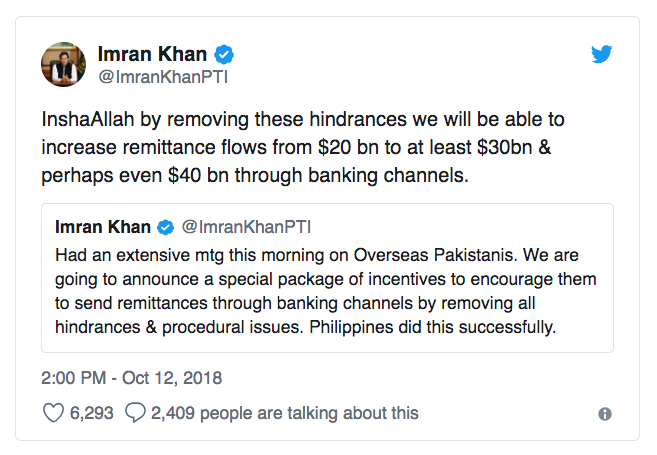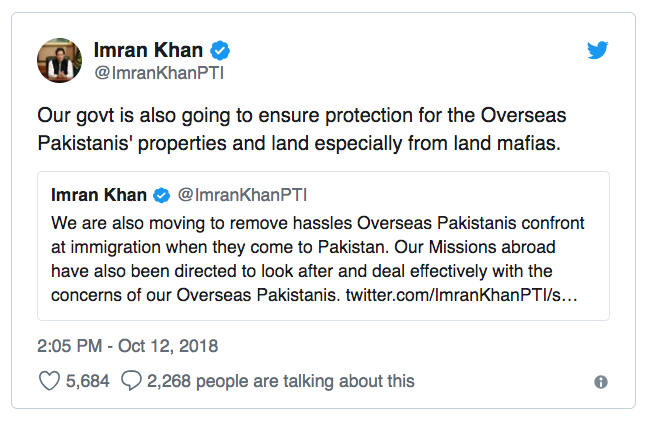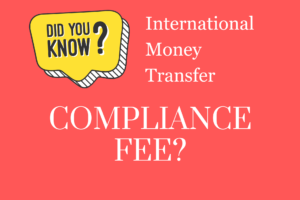Recently, the Prime Minister made a statement that good news will follow with regards to increasing remittance in Pakistan from US$ 20 Billion per year to US$ 30 Billion per year, if not US$ 40 Billion per year. The original article can be read here.

This figure is very much doable. The numbers will not be easy, they will be difficult to achieve, given such statements of the past, but they are definitely doable.

Whilst everyone has an opinion on it, I and a lot many of my colleagues in the business have discussed this at length. On how it can be done. Here is what we have come up with.
The trade missions and embassies of Pakistan abroad have very little to no impact on remittances. Consular services are very much restricted geographically and the message they send out, is extremely narrow and that too, delivered to a very small audience that is already (perhaps) using the banking channels to send money back home.
We need to look at ways to diversify on how money can come to Pakistan, from corridors other than the Middle East, where we rely too much.
Secondly, we need to completely revamp the PRI (Pakistan Remittance Initiative) in SBP and remove the old school that is running it, fire the current Head of PRI. He has perhaps done more damage to remittances because of his ineptness and incompetence that
PRI, currently produces more hinderances than progress.
Low Hanging Fruit
Today, remittances are the backbone of the industry. Here is a summarized version of what the PTI government can do immediately.
- Take the subsidy back to Saudi Riyal 25 (instead of SR 20 as it is right now).
- Clear all past subsidies within 14 days, I am not sure what pleasure the national exchequer gets from holding on to money that is rightfully due to others.
- Implement a policy of clearing subsidy dues on the 1st and 15th of every month.
- Do this for two quarters and you should see a healthy jump in inward remittances. If not, re-evaluate and re-execute.
The subsidy model has worked for Pakistan. We cannot experiment otherwise. A lot many people would like to see the subsidy model be abolished, but because it has a powerful historical data of increasing remittances, we should not downplay it, but rather fix what is broken inside of it.
What Else We Can Do…
We should allow a 7 days (guaranteed) process for any foreign money transfer operator or program manager to get approved and start sending remittances into Pakistan.
We need to quickly declare all money coming from overseas income via marketplaces or freelancers, as remittances immediately.
Lastly, we need to constitute a small oversight board that includes government and non-government personnel, from
We need to increase licenses for INWARD only remittances to Private Limited Companies in Pakistan, which will deal with digital remittances only.
We need to have such licenses at a cost of US$ 1,000 and they are to be fully-functional licensed money transfer licenses.
We need to remove the restriction of a company being 2 years old outside to be able to do a tie-up as a correspondent in Pakistan. As long as the company is able to provide regulatory coverage, we need to approve it. Seven (7) day end-to-end approval process.
This is how you increase remittances.
This is what the Philippines did. I actually read the manual on that, which in many circles is called the Remittance Bible. Over 2,000 pages. Embassies and consular services do nothing
We need to reduce friction in the entire process of getting money into Pakistan, which includes the legal paperwork and approval process to be better, more smoother and quicker than any private sector setup anywhere in the world.
I hope we can for once sack the non-performers in PRI and get back on track.
God Speed Imran Khan.
—
This page was last updated on September 1, 2022.
–




